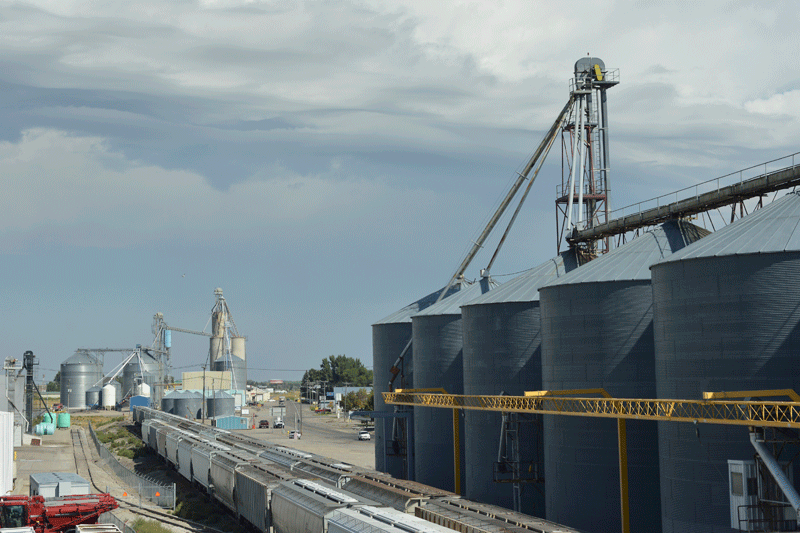The Western Canada grain market
INFLUENCE ON ONTARIO PRODUCERS
IT HAS BEEN said that experience trading wheat is worthless, because each year brings a unique ‘curve-ball’ to deal with. However, the 2013/14 crop year in Western Canada was a ‘curve ball’ of epic portions, the shock waves of which are still impacting markets.

Since December 2011, after 70 years of single desk marketing through the Canadian Wheat Board (CWB), western Canadian wheat and barley producers and grain elevators have been operating with the freedom to market grain as they see fit. This is a significant change from merely executing the top down marketing plans from the CWB.
The first crop year, 2012/13, went relatively smoothly with farmers enjoying great quality crops, record on-farm income, and very competitive grain company bids. However, by September of 2013, it became clear that despite initial concerns due to late planting the market began to anticipate a record breaking harvest in September. Statistics Canada projected 65 MMT with the final December numbers an astounding 75.9 MMT (trend-line 58 MMT) of grain.
RAIL CAPACITY
The railways, who had been performing well in the first year, were caught leaning the wrong way after having moved both power and cars south of the border at the same time the crop size increased dramatically. By September 2013, they were already falling behind by 1,000 cars per week per railway versus grain company orders. When winter arrived earlier than normal mid-way through November with extreme cold and large volumes of snow, car velocity dropped 40% versus a more typical 20% winter slowdown. A bad situation became dire for all involved.
This logistical slowdown, experienced not just in Western Canada but North America- wide, had several impacts on the western Canadian system. Overseas export customers had their Canadian supply pipelines stressed with vessel waits averaging over 30 days; and at one point, 38 vessels were waiting to load, blowing through the previous record of 21. Demurrage and contract non-performance costs for the trade were staggering.
Producers were unable to deliver grain that they had on contract for months beyond their delivery contract window, suffering financial pain and quality costs. To make matters worse, they were unable to contract more grain at what were above average futures prices.
Canadian Flour mills, who had historically experienced priority customer status by the CWB due to the importance and consistency of their usage of western Canadian wheat, found that their needs where deemed as non-crucial by the railways — even though they were within hours of shutting down most of the major Canadian bakeries numerous times during the year. U.S. wheat mills, who had been a prime target of the “new” free market dynamic, found that Canadian car supply was cut to almost zero and they were left trucking wheat or durum thousands of miles to meet their end-use customer needs.
As a result, the Canadian government was deluged with complaints or calls for help from every sector. On March 7, 2014, the federal government announced an Order in Council mandating that the railways move a minimum of one million metric tonne per week. Unfortunately and unapologetically this was ordered without regard to execution by corridor.
To achieve this goal, the railways pulled power, crews, and cars away from every other CN/CP origin to meet this need — including Eastern Canada. This ultimately affected the ability for Ontario soybeans and corn to be shipped east to be exported efficiently, taking money out of the Ontario farmer’s pocket. In addition, if you had grain sales to move to ‘secondary’ markets — such as Eastern Canada or Minneapolis/ Duluth/Chicago — you were out of luck. Shipments of minor products like oats or rye were also affected. The railways were focused on moving unit trains from Alberta to Vancouver or from Manitoba to Thunder Bay and if your business did not fit it was up to you to find a different solution.
These rail problems and delivery delays damaged Canada’s reputation with customers around the world and they are now concerned they cannot rely on Canada’s transportation system to reliably meet their needs. We see many instances where buyers are much quicker to take their demand volume to other supply side markets and the Canadian farmer, Ontario included, is suffering the consequences.
QUALITY CONCERNS
As we enter 2014/15, we of course have a new ‘curve-ball’. Quality is variable with only 50% of western spring wheat hitting the top two grades, and durum, rye, and malting barley all much more significantly impacted by quality downgrades after a slow, wet, harvest. Discounts for off-quality wheat are large versus the good quality and that has farmers slow to market their grain.
This year, like last, will contribute to the evolution of the western Canadian market- place from a managed economy to a free market and I expect that even with the experiences of the last three years it will be a few more before we have a fully functioning and reliably efficient open market.
As it continues to evolve, I suspect due to logistics, price, and risk embedded into western wheat prices moving to Ontario, that Ontario producers will be well rewarded for consistently supplying high quality and high protein hard red winter and hard red spring wheat, both of which Ontario is a significant net importer. Such product will also be in demand in the post CWB world into St. Lawrence export programs. In addition, grain products of which Ontario is a net exporter (especially those that rely on rail or laker movement) will be facing increased competition for logistics in a Canadian supply chain that is at capacity. This competition will increase costs until new capacity can be added. •
Dana Omland is a senior grain merchant of Western Canadian wheat, oats, and rye with Lansing Canada ULC. Prior to starting with Lansing in March 2014, Omland merchandized Ontario wheat for 11 years with Palmerston Grain and the Ontario Wheat Producers’ Marketing Board. He also has 14 years of experience as a commercial/ agricultural banker, investment advisor, and commodity futures broker.









